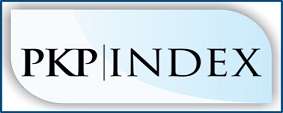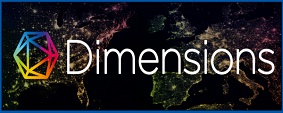Differences in Improving Students' Communication Ability and Learning Independence Through Problem Based Learning Models and Guided Discovery
Abstract
Penelitian ini bertujuan untuk menganalisis perbedaan peningkatan kemampuan komunikasi matematis siswa dan kemandirian belajar melalui model pembelajaran berbasis masalah dan penemuan terbimbing serta interaksi antara model pembelajaran dan kemampuan awal matematika terhadap kemampuan komunikasi matematis siswa dan kemandirian belajar. Dimana populasi penelitian ini adalah seluruh siswa kelas VIII MTs Negeri 3 Labuhanbatu Utara semester ganjil tahun pelajaran 2019/2020 yang berjumlah 230 siswa dalam enam kelas. Sampel penelitian diambil secara acak yaitu kelas VIII-F dan VIII-A. Kelas eksperimen pertama mendapatkan model pembelajaran berbasis masalah, dan kelas eksperimen kedua mendapatkan model pembelajaran penemuan terbimbing. Instrumen terdiri dari tes kemampuan komunikasi matematis dan angket kemandirian belajar siswa. Analisis data menggunakan analisis kovarian (ANCOVA) dan N-Gain. Hasil penelitian menunjukkan bahwa terdapat perbedaan peningkatan kemampuan komunikasi matematis dan kemandirian belajar siswa yang mendapat model pembelajaran berbasis masalah lebih baik daripada yang diberi pembelajaran penemuan terbimbing dan tidak ada interaksi antara model pembelajaran dengan kemampuan matematika awal terhadap kemampuan komunikasi. matematis dan kemandirian belajar siswa.
Downloads
References
Arends, R I. (2012). Learning to Teach ninth edition. New York : McGraw-Hill.
Aminah, S., Wijaya, T. T., & Yuspriyati, D. (2018). Analisis Kemampuan Komunikasi Matematis Siswa Kelas Viii Pada Materi Himpunan. Jurnal Cendekia : Jurnal Pendidikan Matematika, 2(1), 15–22. https://doi.org/10.31004/cendekia.v2i1.29
Andini, D., Mulyani, N., Wijaya, T., & Supriyati, D. (2018). Meningkatkan Kemampuan Komunikasi Matematis Dan Self Confidence Siswa Menggunakan Pendekatan PBL Berbantuan Geogebra. Jurnal Derivat: Jurnal Matematika Dan Pendidikan Matematika, 5(1), 82–93.
Ansari, I.B. (2016). Mathematical Communication: Thinking Strategies and Learning Management. Banda Aceh: PeNa
Baroody, A. J. (1993). Problem Solving, Reasoning and Communicating, K-8. Helping Children think Mathematically. New York: Merril, an inprint of Macmillan Publishing, Company
Barrows, Howard S., & Tamblyn, Robyn M. (1980). Problem Based Learning An Approach to Medical Education. New York: Springer Publishing Company.
Bishop. (1988). Mathematics Education in Its Cultural Context.
Dewey, John. (1964). Democracy and Education. New York: The Macmillan Company.
Dini, M., Wijaya, T. T., & Sugandi, A. I. (2018). Pengaruh Self Confidence Terhadap Kemampuan Pemahaman Matematik Siswa Smp. Jurnal Silogisme, 3(1), 1–7.
Effendi, L. A. (2012). Learning Mathematics with the Guided Discovery Method to Improve the Representation and Problem Solving skills of Junior High School Students. LPPM UPI. Journal of Educational Research,Vol. 13, No. 2, ISSN 1412-565X
Greenes, C. & Schulman, L. (1996). Communication Processes in Mathematics Explorations and Investiations. In P. C. Elliot and M. J. Kenney (Eds). 1996. Yearbook. Communication in Mathematics, K-12 and Beyond. USA: NCTM
Hutagalung, Yusnarti.(2015). Improved Representation Ability and Learning Independence of Junior High School Students Through Guided Discovery Approach with Autograph Assistance. Thesis. Medan: Mathematics Education UNIMED Medan.
Kadir. (2015). Applied Statistics: Concepts, Examples and Data Analysis with the SPSS / Lisrel Program in Research. Jakarta: PT. Rajagrafindo Persada.
Kuhlthau, C. C. (2007). Guided Inqury: Learning in The 21st Century School. Wesport, CT : Libraries Unlimited.
Kulsum, S. I., Hidayat, W., Wijaya, T. T., & Kumala, J. (2019). Analysis on high school students’ mathematical creative thinking skills on the topic of sets. Jurnal Cendekia : Jurnal Pendidikan Matematika, 03(02), 431–436. https://doi.org/https://doi.org/10.31004/cendekia.v3i2
Marbun, S.R. (2019). Differences in the Increased Ability of Understanding Mathematical Concepts and Student Motivation with Guided Discovery Approach with Geogebra Software and Direct Learning Model in MTs Negeri Barus. Unimed Mamatika Education Thesis: Unpublished.
Minarni, A. (2013).The effect of problem-based learning on the mathematical understanding and social skills of students of State Junior High Schools in Bandung. Journal of Paradigma Education.Vol 6 Number 2, hal 162-174. DOI: https://doi.org/10.24114/paradikma.v6i2.1077
Minarni, A., Napitupulu, E., & Husein, R. (2016). Mathematical Understanding and Representation Ability of Public Junior High School in North Sumatra. Journal on Mathematics Education. Vol 7, No. 1, January 2016, pp. 45-58. DOI : http://dx.doi.org/10.22342/jme.7.1.2816.43-56
Mulbar, Usman. (2008). Student Metacognition in Solving Mathematical Problems. (Online).
NCTM. (2003). Standards for Secondary Mathematics Teacher. United States of America : The National Council of Teachers of Mathematics, Inc.
Russeffendi. (2005). Basics of Educational Research and Other Non-exact Fields. Bandung: Tarsito.
Sanjaya. W. (2008). Educational Process Standards Oriented Learning Strategy. Predana Media Grup: Bandung
Saragih, Sahat and Elvis,Napitupulu. (2015). Developing Student-Centered Learning Model to Improve High Order Mathematical Thinking Ability. International Education Studies; Vol. 8, No. 6. Published by Canadian Center of Science and Education. DOI: 10.5539 / ies.v8n6p104
Sugiyono. (2012). Qualitative and Quantitative Research Methods R & D. Bandung: Alfabeta
Tan, S., Zou, L., Wijaya, T. T., Suci, N., & Dewi, S. (2020). Improving student creative thinking ability with problem based learning approach using hawgent. Journal on Education, 02(04), 303–312.
Widarto., Pardjono., And Widodo, N. (2012). Development of Soft Skill and Hard Skill Learning Models for Vocational School Students. Cakrawala Pendidikan, Th. XXXI, No. 3: 409-423. DOI: https://doi.org/10.21831/cp.v0i3.1139
Wijaya, T. T., Ying, Z., Chotimah, S., Bernard, M., Zulfah, & Astuti. (2020). Hawgent dynamic mathematic software as mathematics learning media for teaching quadratic functions. Journal of Physics: Conference Series, 1592(1). https://doi.org/10.1088/1742-6596/1592/1/012079
Wijaya, T. T., Ying, Z., Cunhua, L., & Zulfah. (2020). Using vba learning media to improve students ’ mathematical understanding ability. Journal On Education, 02(02), 245–254.
Zhang, L., Zhou, Y., & Wijaya, T. T. (2020). Hawgent dynamic mathematics software to improve problem-solving ability in teaching triangles. Journal of Physics: Conference Series, 1663(1). https://doi.org/10.1088/1742-6596/1663/1/012069
Zimmerman, B.J and Martinez-Pons.(1990).”Student Differences in Self-regulated Learning: Relating Grade, Sex, and Giftedness to Self-efficacy and Strategy Use
Copyright (c) 2021 Dessy Meylinda, Elmanani Simamora, Mukhtar Mukhtar

This work is licensed under a Creative Commons Attribution-ShareAlike 4.0 International License.



1.jpg)














